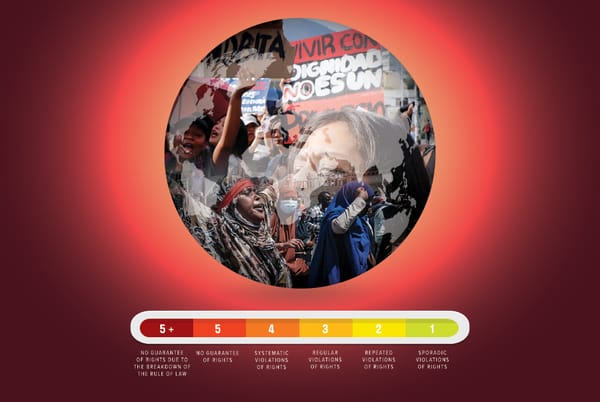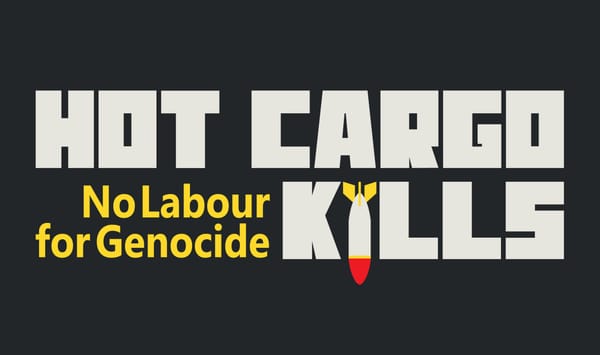
Despite organized labour facing decades of attacks from employers and governments, the union wage premium remains strong.
That is the conclusion of a recently released study by Andrew Stevens, associate professor in the Faculty of Business Administration at the University of Regina, and Angèle Poirier, PhD candidate at the Johnson Shoyama Graduate School of Public Policy at the same institution. “The Union Advantage” provides a detailed comparison of union and non-union wages and benefits across Canada, with a particular emphasis on Saskatchewan.
As Stevens and Poirier report, in 2022 unionized workers earned hourly wages 11 per cent higher than their non-union counterparts. In Saskatchewan, the union advantage was even greater, at 18 per cent. The average union member earned $34.12 per hour in Saskatchewan, $5.18 per hour more than the average non-union worker. In Canada as a whole, the average hourly union wage advantage was slightly smaller but still significant: $34.69 vs. $31.14 per hour, or a difference of $3.55.
The union advantage is even larger at the median (i.e., when we consider the wage directly in the middle of the distribution). By this measure, union members earned 28 per cent more across Canada, a difference of $7 per hour, and 31 per cent more in Saskatchewan, a difference of $7.69 per hour.
As Stevens told Class Struggle: “Across Canada and industries, unions provide clear economic benefits for workers. There are exceptions, of course, but collective bargaining still gets the goods.”
Unions Protect The Most Vulnerable Workers
The report also finds that the advantages of unionization are greatest among workers who otherwise face disadvantages in the labour market. For example, young workers between the ages of 15 to 24 who are union members earned 26 per cent more across Canada and 30 per cent more in Saskatchewan, on average, than their non-union counterparts did in 2022.
Women continue to register a significant overall union advantage, especially in certain industries. For example, in educational services, women who are union members earned 24 per cent (or $7.35 per hour) more than non-union women. Perhaps most importantly, the gender wage gap was smaller for unionized women than for non-unionized women across six industries in Saskatchewan and eight industries in Canada as a whole in 2022. In other words, collective bargaining plays a key role in closing the pay gap between men and women.
Those in part-time employment also benefited from an especially strong union wage advantage, Stevens and Poirier found. When compared to non-union part-time workers, part-timers who belong to a union in 2022 earned 41 and 42 per cent more per hour in Canada and Saskatchewan, respectively. This translates into $7.90 more per hour in Saskatchewan and $8.58 more per hour across Canada. Union membership thus provides greater economic security to those with part-time status.
For workers in low-wage industries, or in sectors with low union density, Stevens and Poirier also report a strong union wage advantage. As Stevens remarked, “What caught me a little off guard was the scale of [the union wage] advantage in certain industries like food services, where unions have a minimal presence.” Indeed, union members in the broad accommodation and food services sector across Canada earned between 5 and 13 per cent more than their non-union counterparts in the same industrial category in 2022. This demonstrates that greater unionization could make a huge difference to workers in such typically low-wage and currently non-union industries.
The Wage Premium in Union Strongholds
“The Union Advantage” also reports a wage premium in sectors perhaps more associated with union membership. For example, in the Canadian construction industry, union members continue to earn more than non-union workers. In 2022, union members in construction earned 16 per cent more per hour than those without union coverage.
As well, the report found that unionized workers earn more than non-unionized workers in the health care and social assistance sector across Canada. In 2022, the average wage rate in this sector was $32.34 per hour for unionized workers, compared to $29.24 per hour for non-union workers (a difference of 10 per cent).
On the other hand, there are troubling figures recorded for the manufacturing sector. The report found that non-union workers in manufacturing earned higher average hourly wages than unionized workers across Canada: $31.91 vs. $29.16 per hour in 2022. Though, when using the median, union members had a slight advantage. Nevertheless, this is a cause for concern, given the once strong union presence in Canadian manufacturing.
Between 1997 and 2023, union density in manufacturing declined from 36.4 per cent to 22.9 per cent. This falling union density, while not the entire story, goes some distance in explaining the eroding union wage premium in manufacturing, a trend that must be reversed.
Advantages Beyond Wages
Beyond wage and salary advantages, Stevens and Poirier’s study also finds that union membership is associated with greater access to benefits, such as paid sick leave. While only 55 per cent of non-union workers in Canada had access to paid sick leave in 2022, 80 per cent of union members did. In Saskatchewan in particular, the difference was even more stark: only half of non-union workers had paid sick leave, while 86 per cent of union members did.
When it comes to pension coverage, the union advantage was even more apparent. Across Canada, only 37 per cent of non-union workers aged 15 and over had access to a workplace pension in 2022. By contrast, 82 per cent of union members had a pension. In Saskatchewan, 45 per cent of non-union workers in this age range had a pension, whereas 88 per cent of union members had this benefit.
Across all industries in Canada, the share of unionized workers with access to benefits, including supplemental medical or dental care, pensions, paid sick leave, paid vacation leave, or maternity/parental benefits, ranged from 71 per cent to 82 per cent. By contrast, among the non-unionized, the share of workers with these benefits ranged only from 37 to 66 per cent. In Saskatchewan specifically, Stevens and Poirier report similar trends.
“The data shows that collective bargaining helps to secure supplementary benefits, like paid sick leave, where most workers are only covered by basic employment standards. So we can’t just focus on average hourly pay. [J]obs might be part-time and casual, but workers in these circumstances still deserve access to health care, paid leave, pensions, and paid vacations. Unionization helps precarious employees secure these gains,” Stevens told Class Struggle.
The Eroding Union Wage Premium?
Throughout the post-pandemic economic recovery, the wages of non-union workers have risen faster than those of union members across Canada, as Stevens and Poirier point out.
From 2020 to 2022, non-union workers saw an average hourly wage increase of $2.04 per hour (7 per cent), while the wages of union members increased $1.68 per hour (5 per cent). Weekly wage increases were also higher for non-unionized workers: a growth of $75.12 per week (or a 7 per cent increase), compared to an increase of $70.14 per week (a 6 per cent increase) for unionized workers.
A tight labour market and rising prices compelled employers to offer higher wages to attract or retain workers. At the same time, union members had to wait for collective agreements to expire before they could renegotiate their wages and salaries. There was thus some concern that non-union wages growing more quickly than union wages would diminish the union wage advantage and perhaps undermine the attractiveness of union membership.
Despite the above trend, Stevens and Poirier find that union membership still provides clear monetary and non-monetary advantages. As Stevens told Class Struggle, “[Union] wages are often constrained by the period in which workers negotiate improved benefits upon expiry of a collective agreement, so non-union employers have the advantage of adjusting benefits unilaterally as they see fit based on economic circumstances and existing business models. But it’s clear that average wages for unionized workers are still higher despite a quicker pace of growth in non-unionized hourly compensation.”
At the same time, the fallout from elevated inflation and a cost-of-living crisis may still encourage greater numbers of workers to seek union membership. After all, only unionization increases workers’ bargaining position through the power of collective organization.
As Stevens put it, “Inflation and its supposed cure — hiking interest rates — is hurting unionized and non-unionized workers alike, so advantages across the board are being chewed up by existing economic circumstances. Real wages are stagnating for most workers. That should be a call to double-down on unionization and use collective bargaining as a tool to get more money into the pockets of workers in Canada. We can’t rely on central bankers and monetary policy to do that for us.”
He added: “Studies over the last few decades illustrate that the union wage premium has been declining, so it’s important to recognize that the benefits still exist and remain strong despite periodic assaults on collective bargaining rights, the effects of austerity and increased global competition.”
Recent polls show Canadians are broadly supportive of unions. In fact, the popularity of unions exceeds actual union membership. In other words, there is a union representation gap. More people want to be union members than currently are. The findings presented by Stevens and Poirier clearly demonstrate why this is the case.
However, labour and the left can’t simply rest on our laurels. Over the past several decades, private sector union density in Canada has declined, and with it so has the union wage premium. At the same time, thousands of workers want to be part of the labour movement and are presently prevented, whether because of prohibitive laws, employer resistance, or a lack of union organizing.
In other words, despite the welcomed persistence of the union advantage, there’s still plenty of work to do.
Recent Class Struggle Issues
- January 15 | Public Sector Pensions In New Brunswick Are At Risk
- January 8 | Ontario’s Hospital Labour Force Is At A Breaking Point
- January 3 | How Did Canadian Workers And Unions Fare In 2023?
- Dec. 18, 2023 | Alberta’s Right-Wing Approach To Labour Is Unprecedented In Canada







